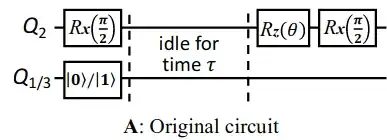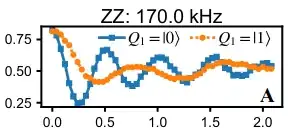the difference in frequency is precisely because the interaction is always on.
Let's start with a scenario where there is no ZZ interaction. In this case, the Hamiltonian during the free evolution time is simply
$$
H=\sum_{i=1,2,3}\frac{1}{2}\hbar\omega_{i}\sigma_{zi}.
$$
Then the phase accumulated during the free evolution time for qubit 2 is $\omega_2 \Delta t$, where $\Delta t$ is the free evolution time, regadless of the state of qubits 1 and 3.
If, however, we include ZZ interaction (and assuming for simplicity we only have qubits 1 and 2), the Hamiltonian becomes:
$$
H=\sum_{i=1,2}\frac{1}{2}\hbar\omega_{i}\sigma_{zi} + \frac{1}{2}J\sigma_{z1}\sigma_{z2}.
$$
Now, if we set qubit 1 to the $|0\rangle$ state, the evolution seen by qubit 2 is effectively
$$
\langle0|H|0\rangle=\frac{1}{2}(\hbar\omega_{2}+J)\sigma_{z2}
$$
and so the phase accumulated during free evolution will be $(\omega_2 +J )\Delta t$. If, on the other hand, the state is $|1\rangle$, the accumulated phase will be $(\omega_2 -J )\Delta t$. This is the origin of the change in oscillation frequency in the figure above.

